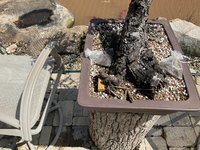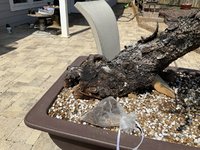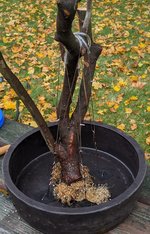Maybe so, I don’t subscribe to his program. But, I’ve seen his followers advocate using steel for shohin, stating “that’s what Ryan teaches”.He only recommends steel wire for larger trees. Aluminum for shohin and smaller.
I started using steel wire in 2019. No failures and my larger trees are much more secure i.e., zero movement over time which is good considering weather and goats. Had one get out and picked up a tree by the trunk... only a bit of soil loss and the tree did not budge from the pot. F@$# goats.
All I’m saying is to use some common sense, folks!



